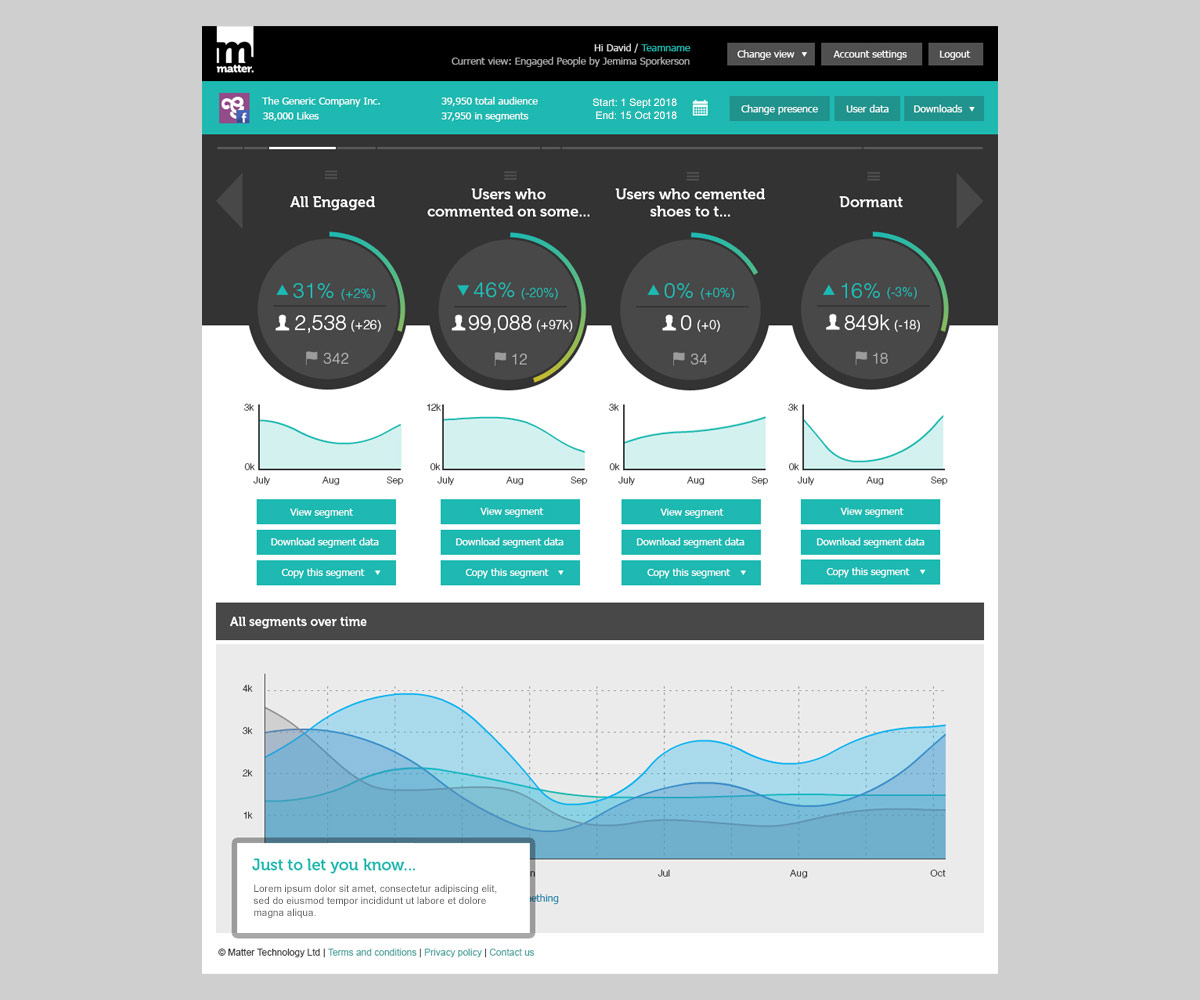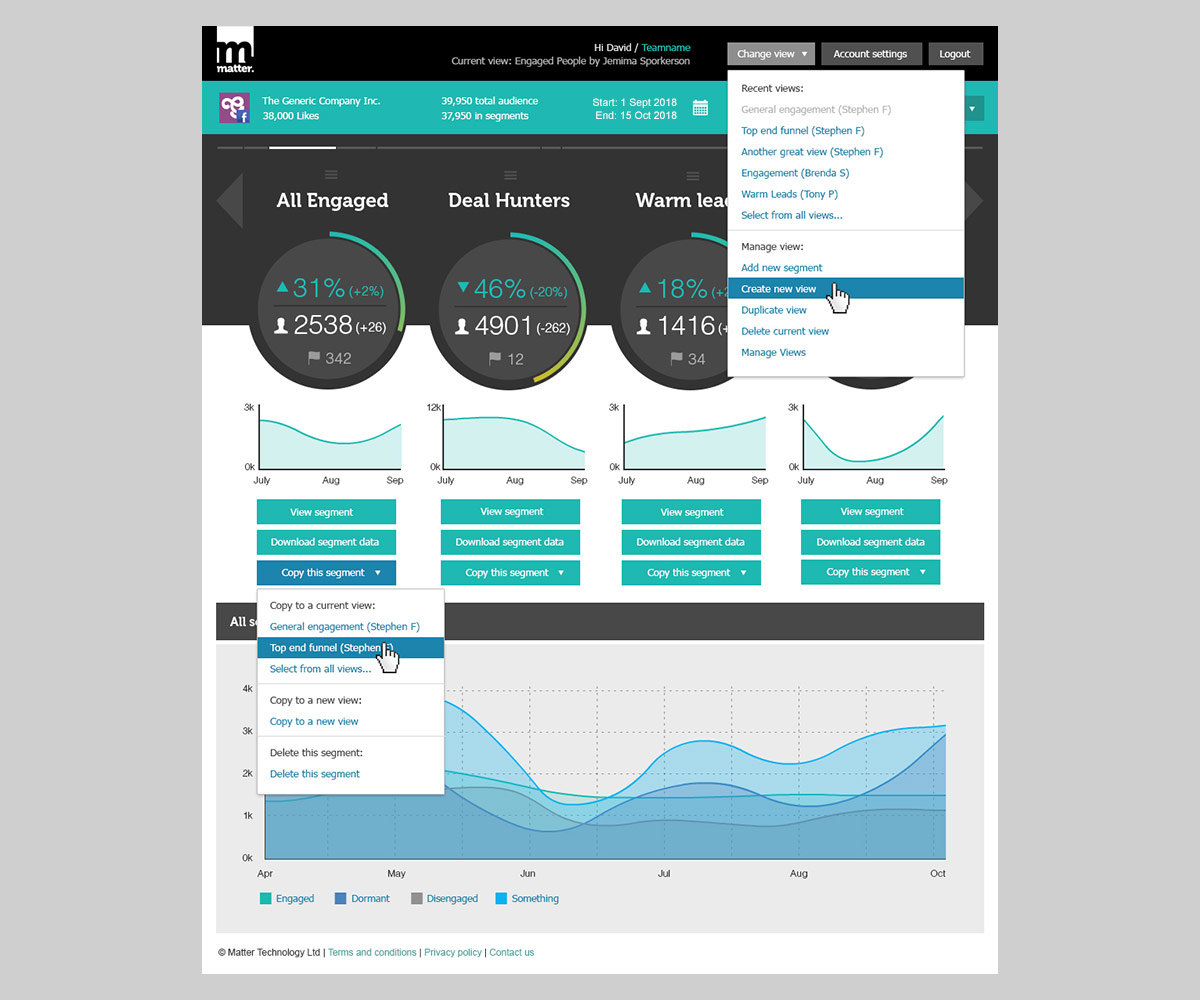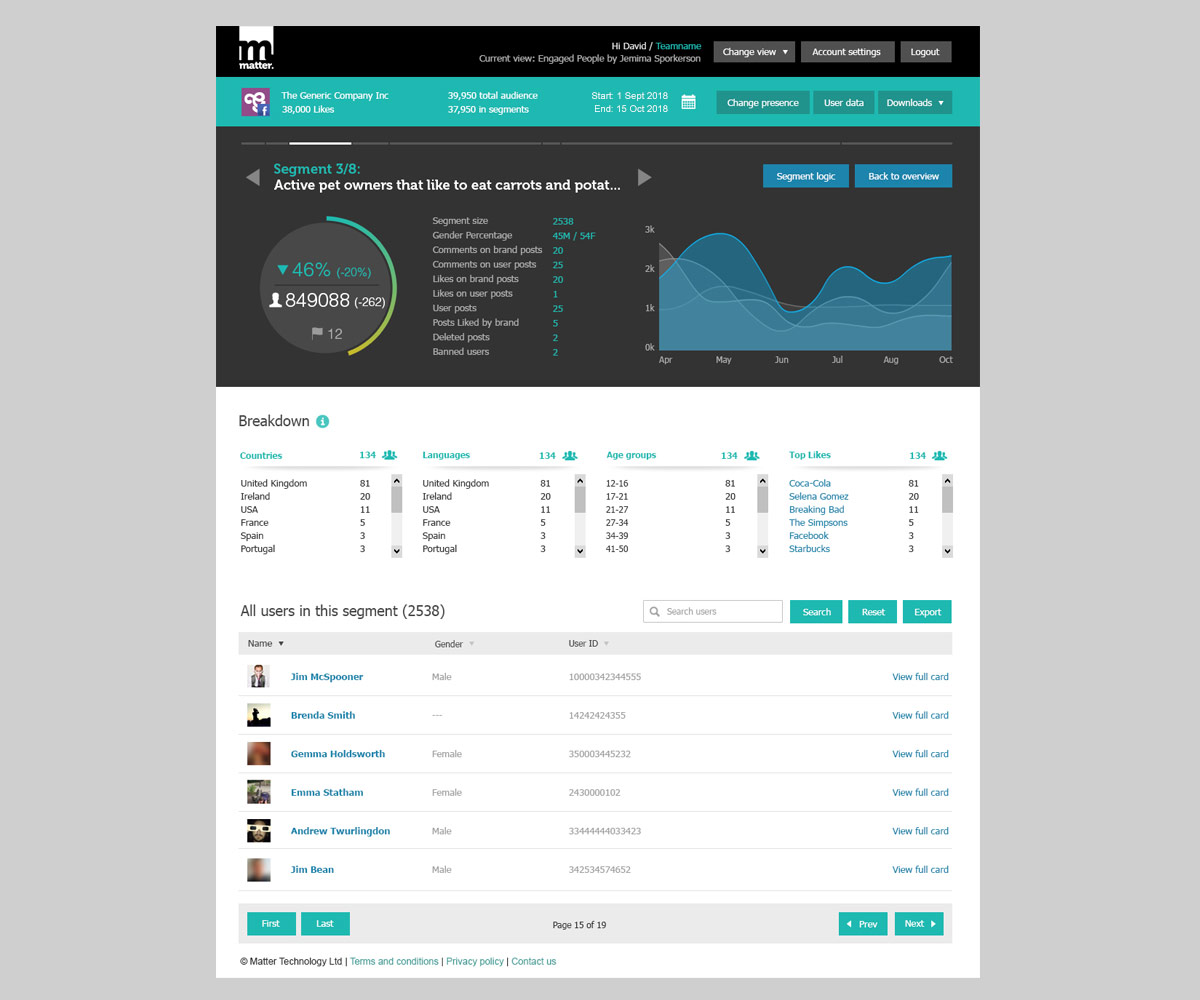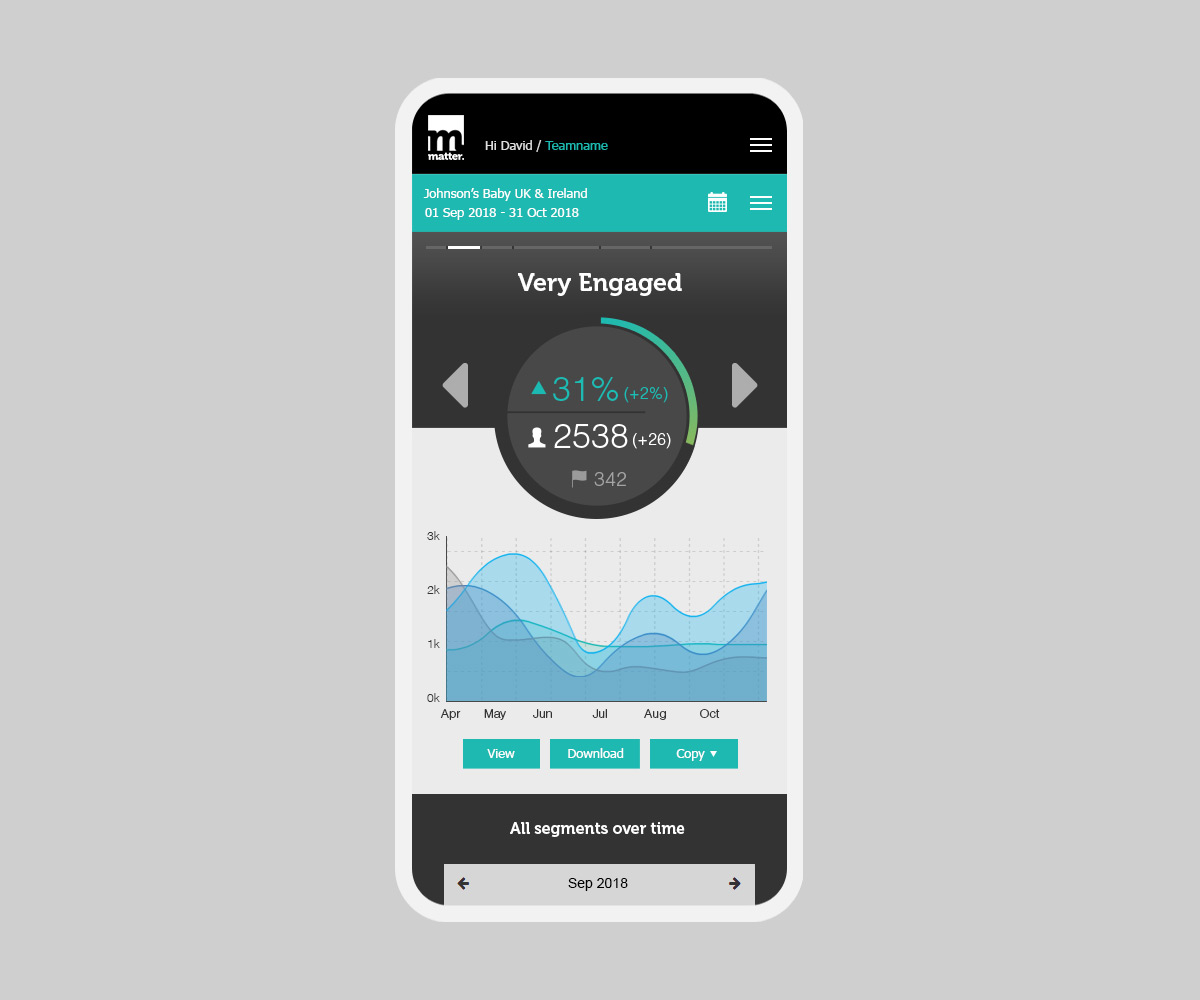Making data powerful, accessible and beautiful.
B2B social segmentation platform, with a focus on surfacing powerful audience insights via a highly visual interface.
Challenge
Many organisations invest in building huge numbers of social followers, but are essentially blind when it comes to knowing who those followers are.
Blanket marketing messaging and catch-all strategies were becoming the norm, as scale meant audience diversity couldn’t be tracked.
At a basic level, advocates and detractors should be identified, with further highly valuable nuanced groups tracked as part of social follower ROI.
Solution
We created a proprietary integrator, allowing brands to identify and segment social users into actionable groups.
By segmenting fans and followers by interaction levels and types, interests and demographics (plus additional custom criteria), Engine helps focus marketing plans on real people.
It can be used to reactivate dormant fans, convert advocates into sales opportunities or understand the impact of a brand’s social activities – the flexible platform allows creation of user segments based on what’s important to a specific brand.
After identifying segments, track changes over time to quantify tactics, overlay CRM and sales information to see how engagement maps to purchase, or output segments for ad targeting, lookalike audiences etc.
Result
Matter Engine was ahead of its time and pioneering with it’s data interrogation of Facebook and Twitter audiences (some brands found it literally unbelievable as a concept).
As with all tools based on the ‘shifting sands’ of social platforms APIs, Engine was retired after specific access points were closed. However, as a big data B2B platform product we took a great deal of learnings from it’s inception and development.
Creating the UX and UI around such a data-heavy platform (especially on mobile devices) was great experience, especially around team and user customisations across the wireframe and user-testing stages.
Responsibilities
- Solution ideation
- Defining requirements and user journeys
- Proof of concept (high-level design)
- Detailed UI/UX design (end to end)
- Briefing dev teams
- Ongoing roadmap/backlog prioritisation



